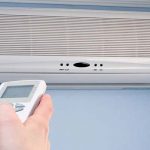Why Your Dental Clinic Could Be Harming The Environment
In recent years, every business, and every profession, including dentists, has had to do a ‘green audit’ on itself, and think seriously about how the way it operates impacts the environment. Long gone are the days when the only industries that were thought to be harming the environment were the big polluters. Now, even the smallest one-person business operating from home should be thinking of its green credentials.
Of course, dentists have also had to look at how they operate, and this has been an ongoing progress, both at an industry level, and at those levels where an individual dental clinic considers its day to day practices.
Now it might be the case that how your dental practice operates has not been measured against how green it should be. After all, a visit to the dentist for most patients is not something they would associate with harming the environment.
However, whether it is in the reception area, waiting room, treatment room, or staff room there is almost certain to be something that can be changed, replaced, or improved to make your dental practice more environmentally friendly.
In fact, many studies have shown that the dentistry industry produces more than its fair share of chemicals and materials that are harmful to the environment, is responsible for a great deal of energy usage, and generates literally millions of items of waste that are thrown away, which could otherwise be recycled.
Perhaps one of the biggest areas of concern is the amount of hazardous waste that a dental practice will produce, with much of it being chemical waste. Near the top of culprits is amalgam and the mercury particles that it contains. As you hopefully are aware mercury is hazardous to just about every living creature on the planet, and it is not exactly healthy for plant life either.
If we tell you that in some areas, up to 50% of the mercury found in wastewater can be attributed to dental clinics, then you will appreciate that there is much to be done to reverse that. 50% means that there are literally tons of mercury entering water treatment plants that dentists are responsible for.
The answer for dentists is to install amalgam separators that remove the mercury and other harmful metals from the amalgam for safe disposal, rather than it ending up in public water systems.
As for other harmful chemicals, these can originate from processes such as those used with dental x-rays. Where a dental practice still uses traditional x-ray systems, these require x-ray fixer chemicals and lead foils which are two of the main sources of toxicity and harm to the environment.
With the entire world switching to digital system or another you will not be surprised to learn that there are now digital x-ray machines. These can produce digital x-ray images, without the need for harmful chemicals.
The final area to think about is how much waste your dental practice creates every day. This can be anything from old magazines that have been read by patients, to the instruments that you use in your treatment room. In between, you have items such as patient bibs, gloves, gowns, paper waster, and plastic waste.
All of these, and many other items are capable of being recycled, and if you do not currently do so, consider how much waste you are adding to the environment compared to those dentists who have recycling as a core principle in their practice.






